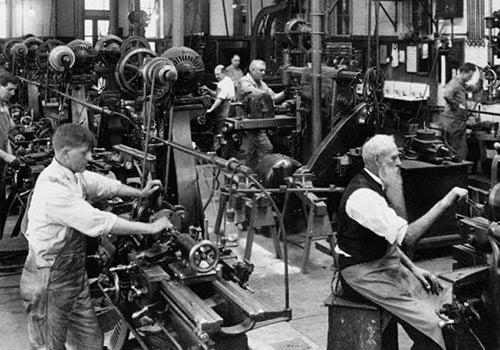
A Walk Through Time: The History of CNC Inserts
Share
Manufacturing has come a long way since the days of manual labor. With the advent of Computer Numerical Control (CNC) machines, the manufacturing process has been revolutionized. These machines are faster, more efficient, and accurate, thanks to the use of a replaceable cutting tip called the CNC insert. The CNC insert is essential in achieving precision, accuracy, and high-quality finishes in manufacturing.
In this blog post, we will take a walk through time to explore the history of CNC inserts and how they have evolved over the years.
The Early Days of CNC Inserts
The first CNC machines were developed in the 1940s and 1950s. These machines used carbide inserts, a material that was expensive and difficult to manufacture. However, they provided superior performance compared to traditional cutting tools. Carbide inserts were made of tungsten carbide and cobalt, which made them durable and long-lasting. They were used in turning, drilling, and milling operations.
Despite their durability, carbide inserts had some limitations. For example, they could not withstand the extreme temperatures generated during high-speed cutting operations. As a result, manufacturers began to look for alternative materials that could withstand such conditions.
Modern CNC Inserts
In the 1970s, the development of new materials led to the production of better CNC inserts. The introduction of ceramic inserts in the 1980s revolutionized the manufacturing industry. Ceramic inserts were harder and more wear-resistant than carbide inserts. They could withstand higher cutting speeds and temperatures, resulting in faster machining and improved productivity.
Ceramic inserts were not without their drawbacks, however. They were brittle and prone to cracking if subjected to excessive force or pressure. As a result, manufacturers continued to search for new materials that could provide the best of both worlds - durability and resistance to heat and wear.
In recent years, the development of new coatings and geometries has further improved the performance of CNC inserts. New coatings such as titanium nitride (TiN), titanium carbonitride (TiCN), and aluminum oxide (Al2O3) have improved the wear resistance and tool life of inserts. Geometries such as wiper inserts and high-feed inserts have improved the surface finish and productivity of machining operations.
These advancements have allowed manufacturers to achieve higher levels of precision and accuracy in their products. CNC inserts are now an essential component of CNC machines, and they continue to play a vital role in the manufacturing process.
Conclusion
CNC inserts have come a long way since the early days of carbide inserts. The development of new materials, coatings, and geometries has resulted in improved performance and productivity in the manufacturing industry. As technology continues to evolve, we can expect to see further advancements in CNC inserts, leading to even more efficient and accurate machining operations.
Manufacturing will continue to evolve, and CNC inserts will remain at the forefront of that evolution. With their ability to achieve high levels of precision and accuracy, CNC inserts will continue to be an essential component of the manufacturing process for years to come.




